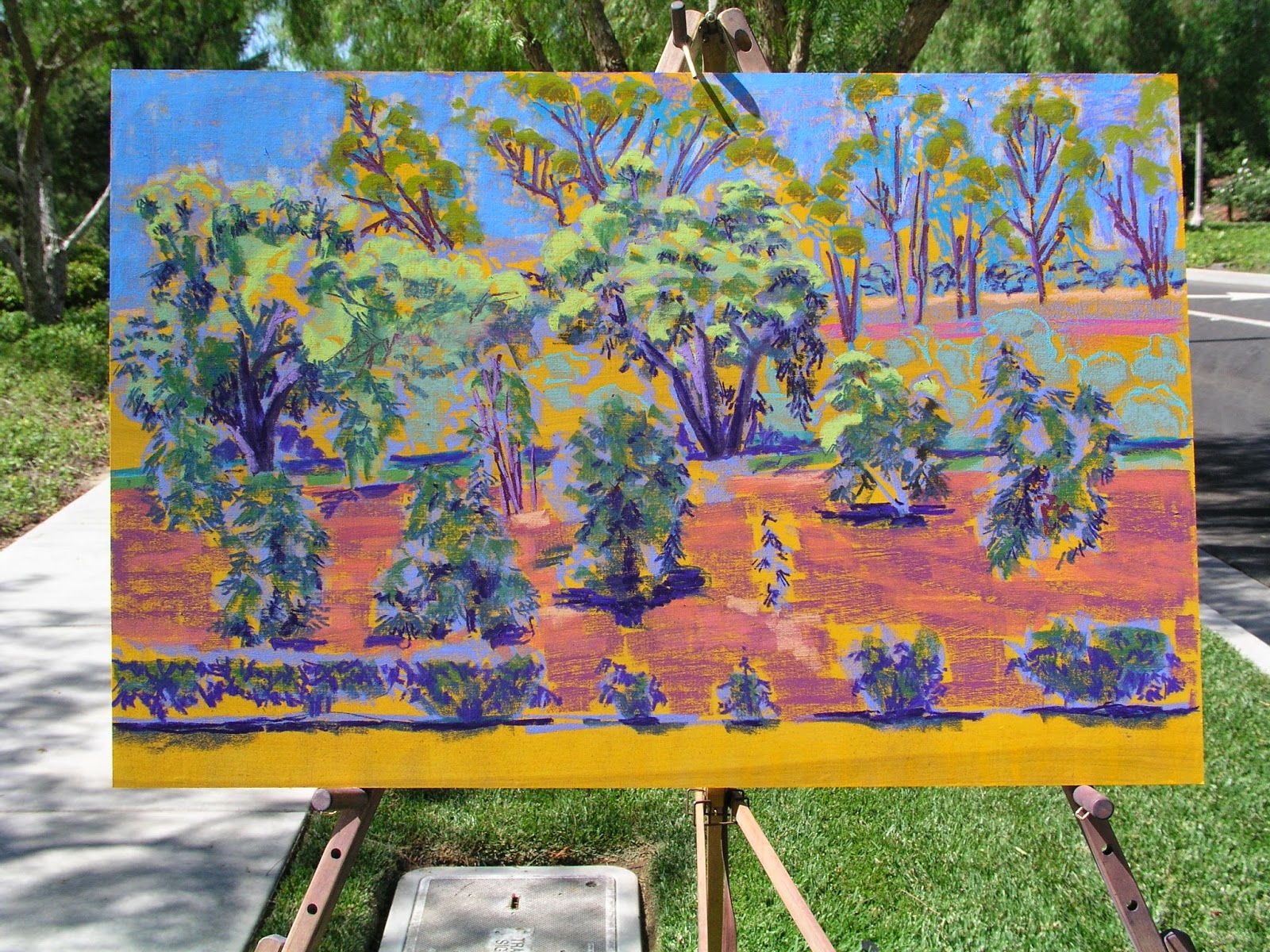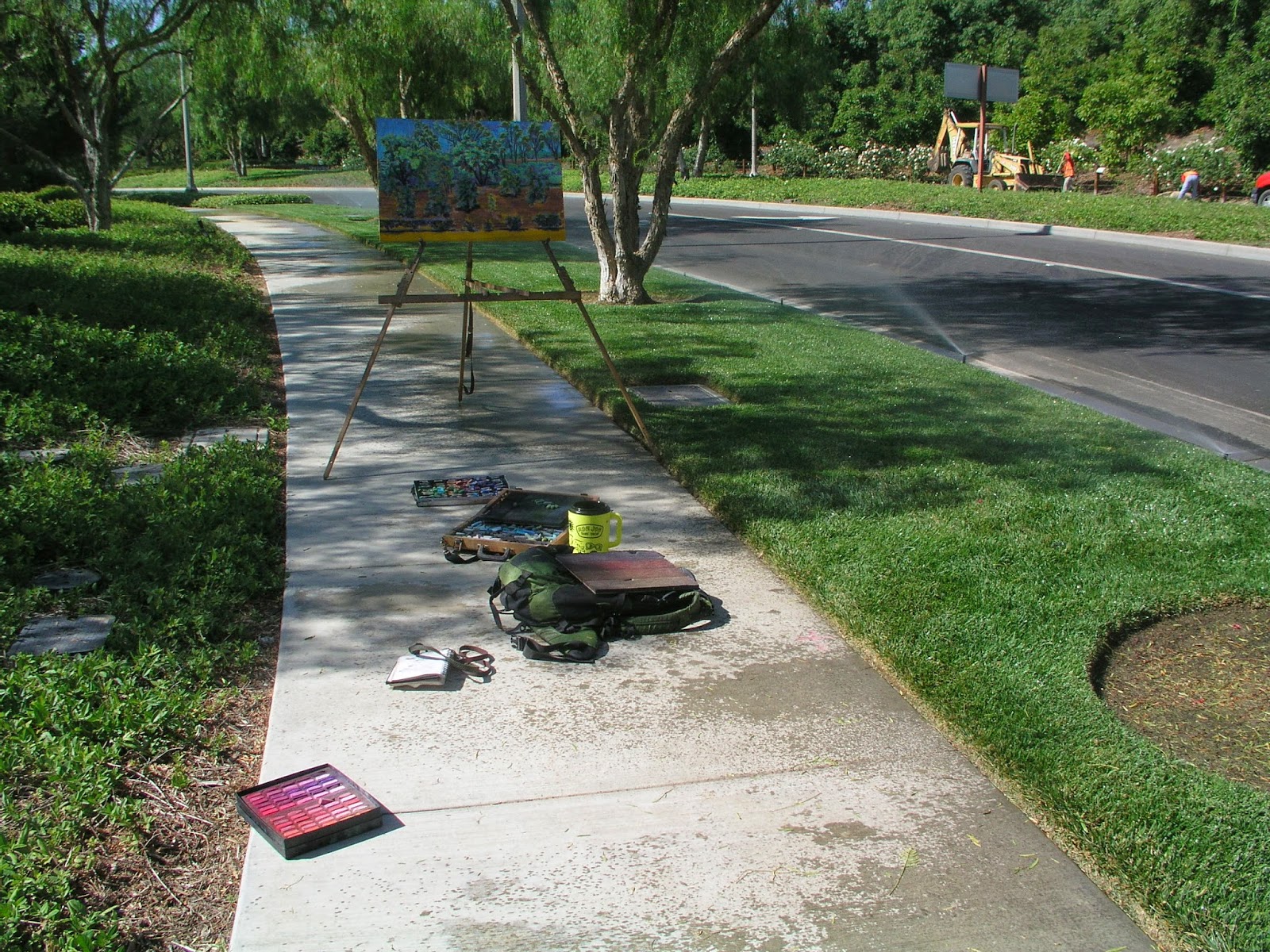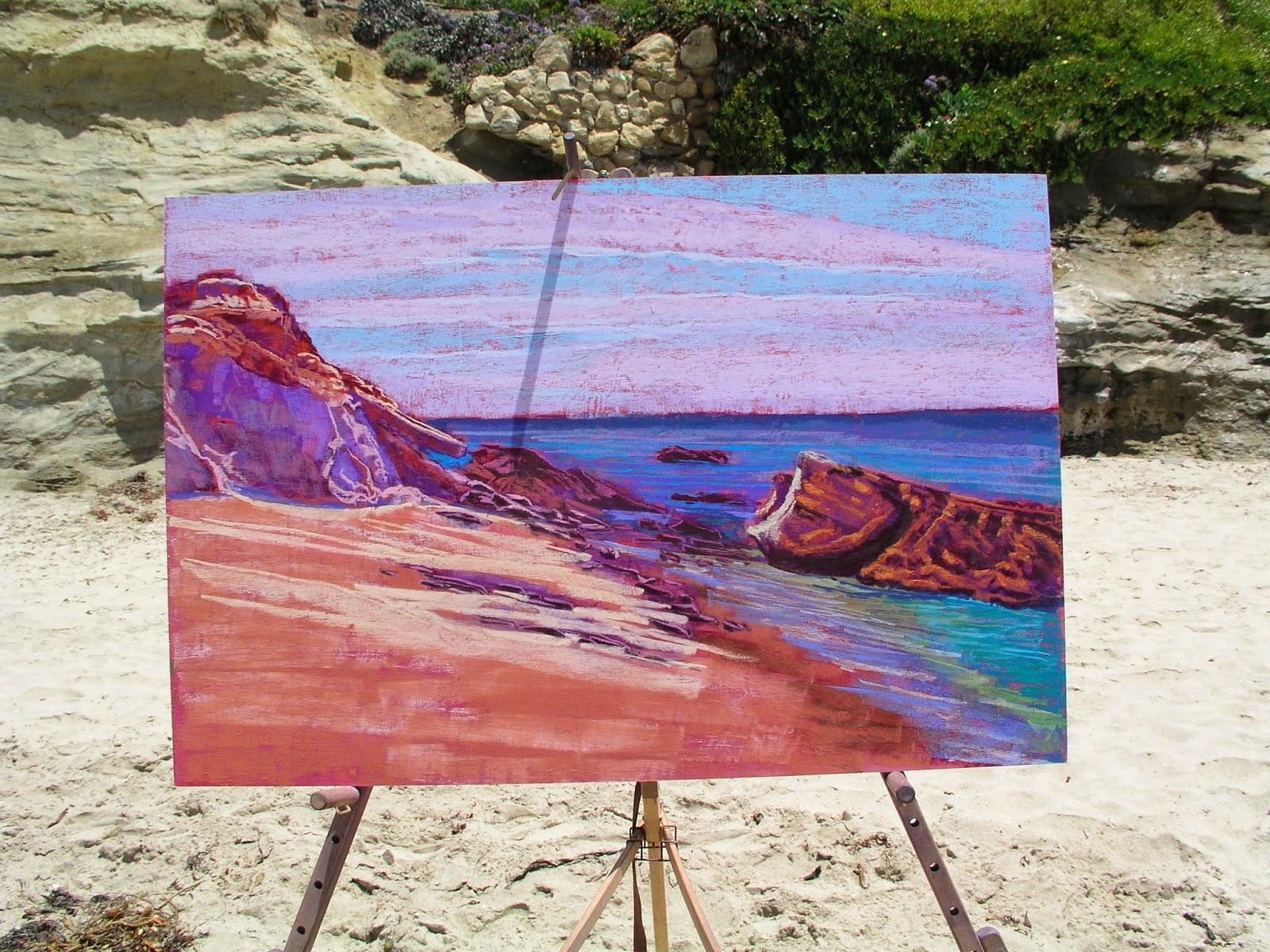 |
Wednesday, June 25, 2014
Paint Out with Jeff Sewell
Getting a Head Start
 |
| When ever I go to a demonstration I have a huge desire to paint instead of listening to the painter. To overcome that urge, I have been going early to the location and painting. |
 |
This is the point where I stopped. Jeff had gotten to the location and I did not want to be rude. After all, this is why I came here.
|
 |
| The finished painting. 24"X 24" |
 |
| Add caption |
Jeff Sewell's Demonstration
 |
Nice.
|
Second with Sewell
When the demonstration was over, I started my painting; but not before I changed the color of my board. The green would have worked but I thought the blue board in the car would work better. The color of the board influences all the other color choices and the way they look on the board.
Jeff thought the foreground was too distracting and busy. He did not think the boulders in the foreground were needed. He thought there should be more emphasis on the shape of the gully to create a path for the viewer.
Jeff stayed until 8 pm painting with us. He ended up doing a second painting. Here is a close up of my painting which measures 24"X 36".
Jeff thought the foreground was too distracting and busy. He did not think the boulders in the foreground were needed. He thought there should be more emphasis on the shape of the gully to create a path for the viewer.
Finish the First
After I finished the 24"X 36" piece I went back and finished this one. Between the two I like this one better.
Tuesday, June 24, 2014
Avocado Grove
This avocado grove has become incorporated into this new housing development in Tustin. As Orange County continues to grow remnants from the past are vanishing. It was nice painting in the shade and on the grass.
Every different color board makes all of the colors in my pallet react differently. The blues added to this yellow board creates a vibrant visual color mixing. Every time I paint on a different color board it changes my pallet.
Every different color board makes all of the colors in my pallet react differently. The blues added to this yellow board creates a vibrant visual color mixing. Every time I paint on a different color board it changes my pallet.
Avocado Grove
 |
| As I laid the color down for the soil and the foliage for the trees, I found I was getting farther and farther away from the feel that I wanted for the painting. |
Avocado Grove
I was in a deep level of concentration when suddenly the lawn sprinklers went on. Pastels and water do not mix. They dissolve when they come in contact with water. I had to scramble to get all of my stuff onto the sidewalk.
Sunday, June 15, 2014
Burn Off at Heisler
I have had a fascination with this beach as long as I have lived in Southern California. The bluffs along the beach, the shape of the rocks, and their changing colors keep me coming back time after time.
As a painter with pastels, I find that it is hard to get specific instruction on the use of my tools. I don't subscribe to everything that I am told by the oil painters that I paint with. One of the things I do is I paint with sunglasses. The reason they don't want you to paint with sunglasses is because your paintings will come out brighter than you want. I will from time to time paint with the sun on my board. They don't want you to do that because of the intensity of the color created by the light on the paint. It creates glare.
The shadows on the rocks and the cliffs were not going to last so I captured them quickly. The sky sets the tone of the whole painting. The fog was burning off quickly so I made sure to get its essence first thing.
At this point I am attending to some of the smaller highlights within the rocks and establishing the feeling and color of the beach.
The finished piece is 24"X 36".
Burn Off at Heisler
As a painter with pastels, I find that it is hard to get specific instruction on the use of my tools. I don't subscribe to everything that I am told by the oil painters that I paint with. One of the things I do is I paint with sunglasses. The reason they don't want you to paint with sunglasses is because your paintings will come out brighter than you want. I will from time to time paint with the sun on my board. They don't want you to do that because of the intensity of the color created by the light on the paint. It creates glare.
 |
| The color of the board influences the color choices that I make as much as the landscape itself. |
The shadows on the rocks and the cliffs were not going to last so I captured them quickly. The sky sets the tone of the whole painting. The fog was burning off quickly so I made sure to get its essence first thing.
At this point I am attending to some of the smaller highlights within the rocks and establishing the feeling and color of the beach.
The finished piece is 24"X 36".
Friday, June 13, 2014
A Bad Day Painting
Sunday, June 1, 2014
Little Corona Sunset
The color of the water as it lapped the shore and the reflection of the water on the wet sand has been a subject that I have been interested in for some time. I think I will do a series of paintings based on this topic.
I love the endless subtle color changes in the water and the tonalist properties found in these landscape subjects.
Little Corona at Sunset
 |
At this point I am about half way through the painting. The composition is set and the shapes are are roughed in. I am applying the lighter colors and the details into the composition.
|
 |
| The highlights on the rocks as the sun slipped towards the ocean were the last thing to capture in the painting. |
Subscribe to:
Comments (Atom)









































